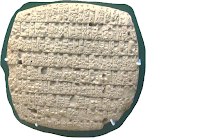An ethical code
is like the tip of an iceberg which represents the conscious acknowledgment of
the valuations made by a human group. The underwater part has its roots in
those emotional valuations that were successful in the process of survival
during a specific period of the life of the group. These hidden valuations are
basically encoded at a deeper level in the social actions, and thus, in the
group’s communications, i.e. in its mythico-ritual axis. A common
characteristic to all ethical codes is their pretension of universal validity,
for they express the way things are. Contemporary Western codes base their
valuations in a mythico-ritual axis which is a mixture of myths of universal law
and myths of the human law, but could we formulate ethical principles which
follow exclusively principles of human law, putting aside gods and the
supernatural, or even materialist reifications (and transcendentalizations ) of
the own human being?
This is a small collection of ethical axioms based on
an anthropological onto-epistemology.
Ethical axioms
Principle of Self-Sufficiency: Human beings are not means for something else, they are ends in themselves. This one was expressed by Kant, among others.
Principle of
Life Preservation: Human life
must be preserved. Preserving human life implies the general preservation of
life, sentient and non-sentient. However, despite the fact that we are the peak
of life on Earth, we are not its only neither its final card, for evolution
continues at a much bigger scale than us through mass extinctions.
Principle of the Limits of Self-Preservation: Human life is only worth under the social conditions which allow the self-realization and intellectual development of the group and the individual. Mere brutish and nasty living is not enough. We have the knowledge necessary for a life oriented towards intelligence and personal growth.
Principle of Juridical Freedom of Expression: Every individual is free to express publically any idea or opinion, even if is contrary to the general interest of the group, and cannot be punished for it.
Principle of Autonomy of the Individual: Every individual is the only owner of his/her body, and the only determiner of what is best for his/her health and way of life. No individual or group can impose its will to others.
Principle of the Limits of Self-Preservation: Human life is only worth under the social conditions which allow the self-realization and intellectual development of the group and the individual. Mere brutish and nasty living is not enough. We have the knowledge necessary for a life oriented towards intelligence and personal growth.
Principle of Juridical Freedom of Expression: Every individual is free to express publically any idea or opinion, even if is contrary to the general interest of the group, and cannot be punished for it.
Principle of Autonomy of the Individual: Every individual is the only owner of his/her body, and the only determiner of what is best for his/her health and way of life. No individual or group can impose its will to others.
Meta-ethical axiom
Principle of Ethical Relativism: there is not a universal set of ethical values for all human beings but there are particular ethical sets which are mythico-ritually determined.

Comments
Post a Comment
Please write here your comments